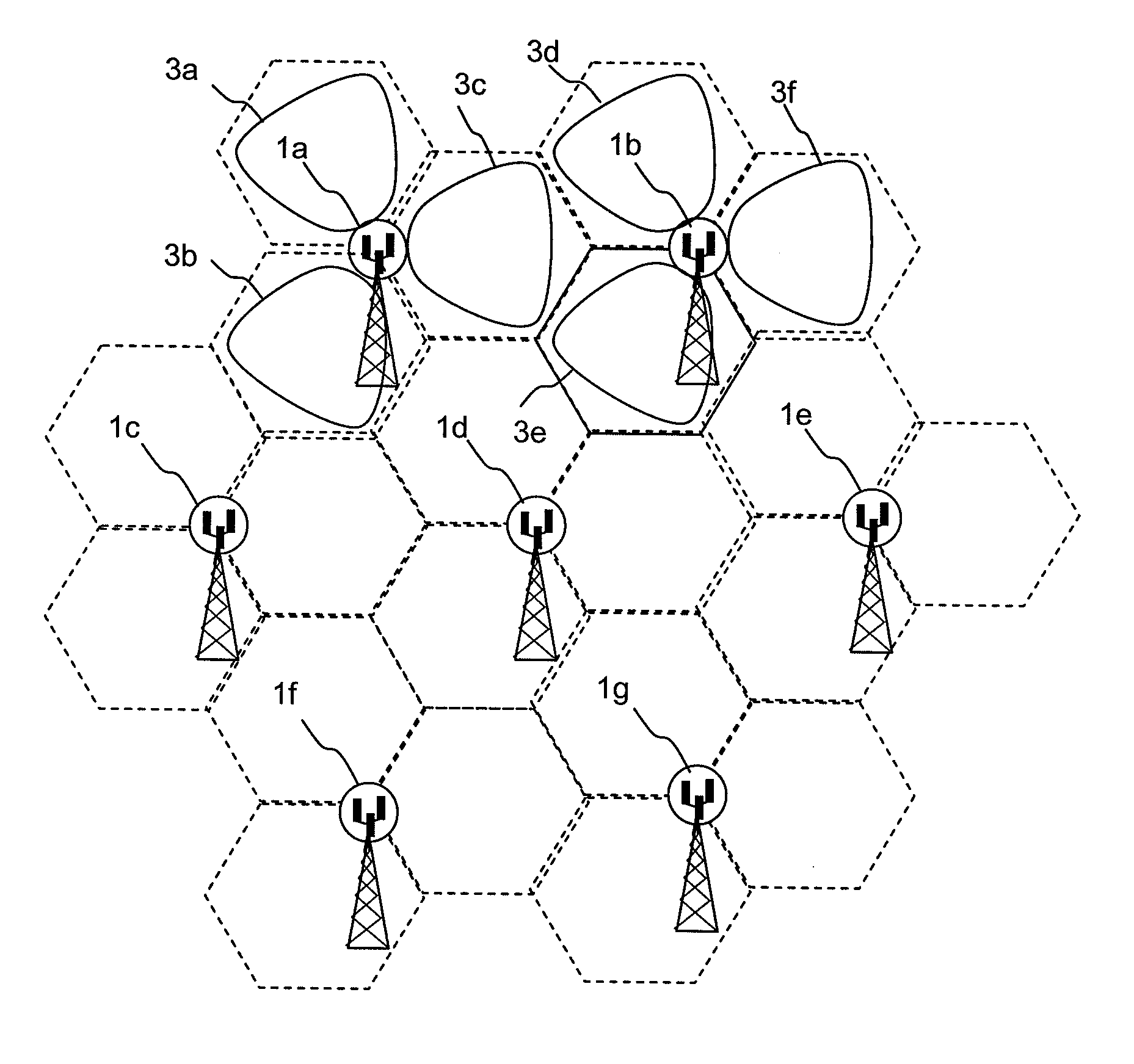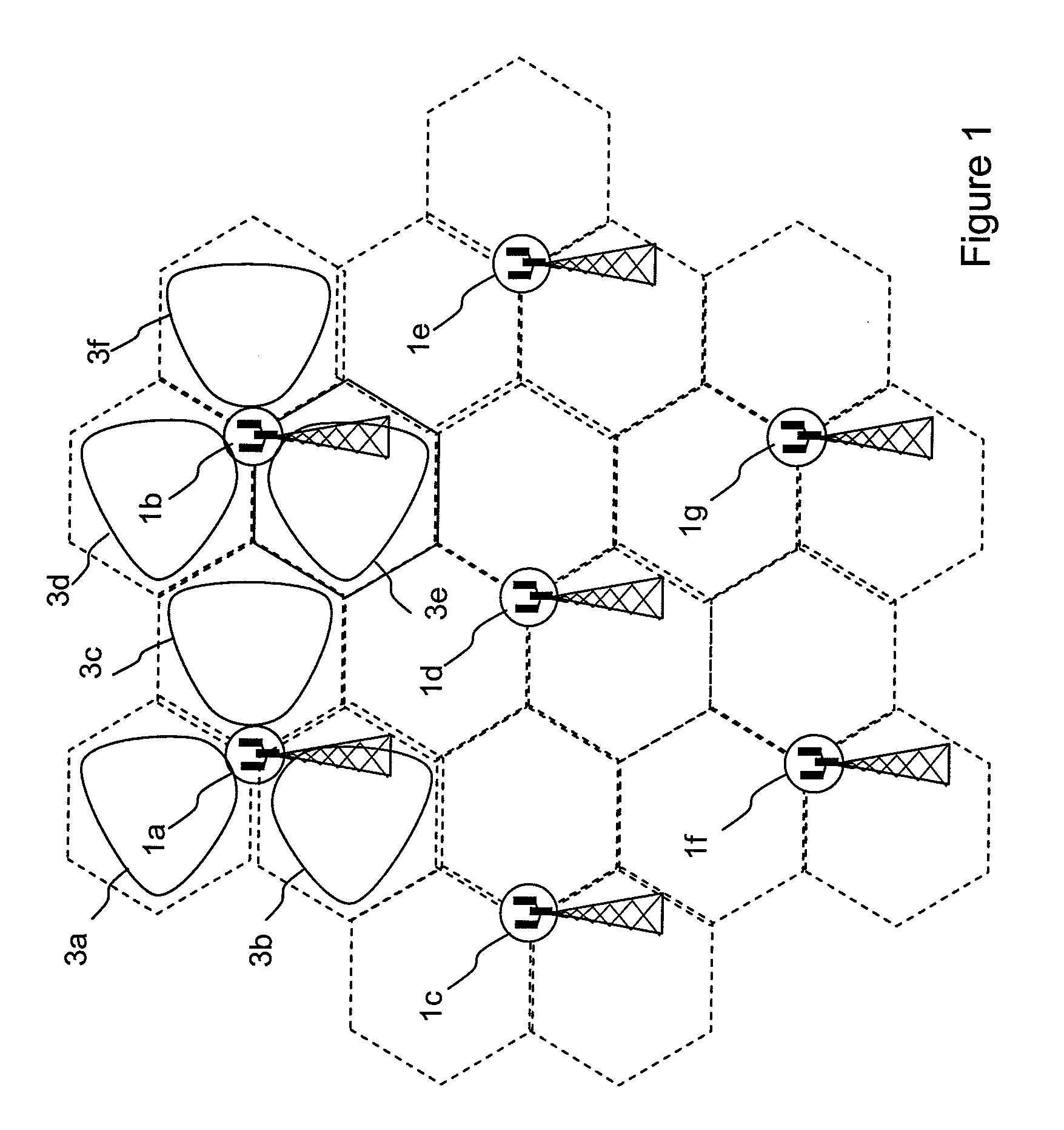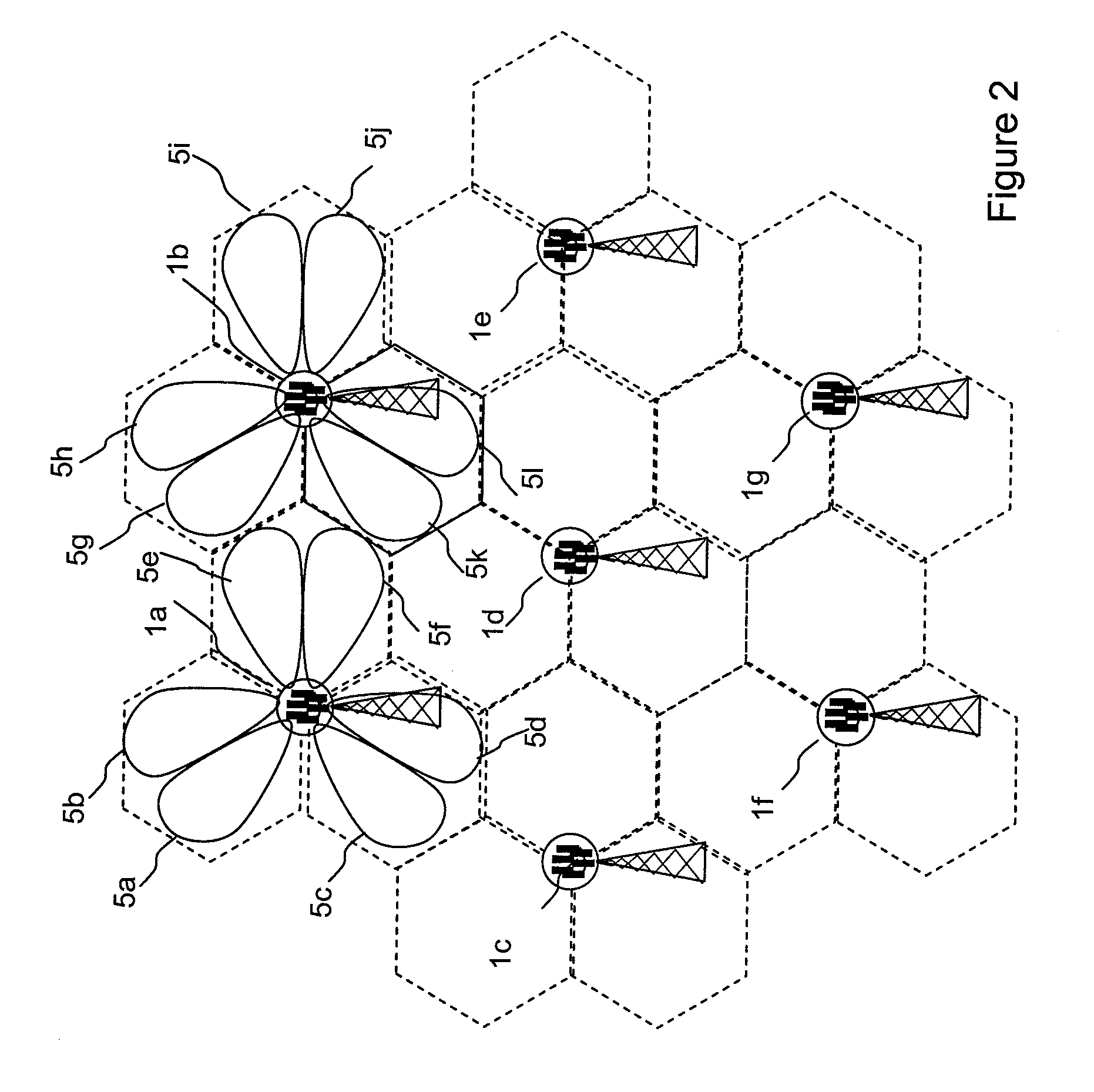Multibeam Antenna System
a multi-beam antenna and antenna technology, applied in the field of beamforming antenna systems, can solve the problems of large antenna installation and installation costs, and large surface area increase, so as to maximise the antenna gain and directivity
- Summary
- Abstract
- Description
- Claims
- Application Information
AI Technical Summary
Benefits of technology
Problems solved by technology
Method used
Image
Examples
Embodiment Construction
[0044]In general, the present invention is directed to methods and apparatus that enhance the capacity of wireless communications between a base station and remote stations by the implementation of space division multiplexing. The invention will be described in the context of a cellular wireless system, but it is to be understood that this example is chosen for illustration only and that other applications of the invention are possible.
[0045]FIG. 3 illustrates a first embodiment of the invention, which relates to space division multiplexing. In the first embodiment, two antennas 11a, 11b and a hybrid combiner 21 produce two antenna beams with different radiation patterns that are connected to respective radio transceivers 27a, 27b. The beam that is produced at the sum port 23 of the hybrid combiner 21 will be referred to as the sum beam, and the beam that is produced at the difference port 25 of the hybrid combiner 21 will be referred to as the difference beam. The radiation pattern...
PUM
 Login to View More
Login to View More Abstract
Description
Claims
Application Information
 Login to View More
Login to View More - R&D
- Intellectual Property
- Life Sciences
- Materials
- Tech Scout
- Unparalleled Data Quality
- Higher Quality Content
- 60% Fewer Hallucinations
Browse by: Latest US Patents, China's latest patents, Technical Efficacy Thesaurus, Application Domain, Technology Topic, Popular Technical Reports.
© 2025 PatSnap. All rights reserved.Legal|Privacy policy|Modern Slavery Act Transparency Statement|Sitemap|About US| Contact US: help@patsnap.com



